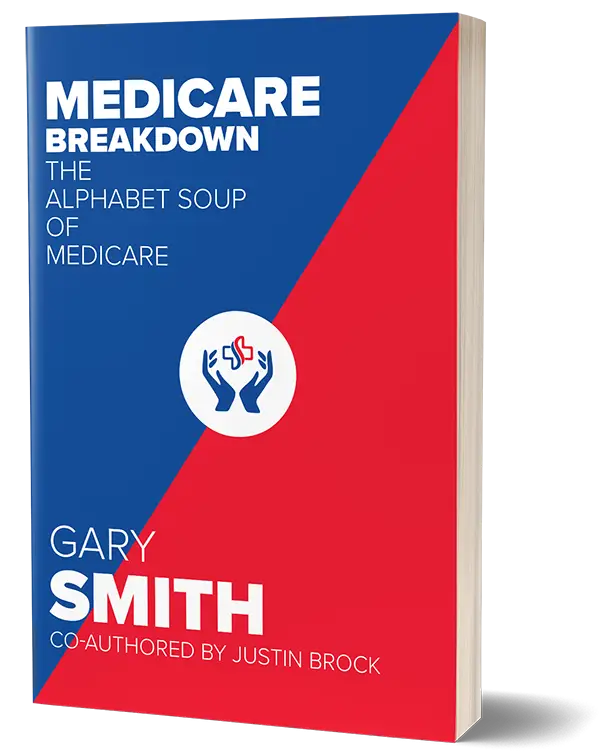Medicare Supplement Plans: Your Guide to Coverage, Costs & Confidence
Get A Free Quote
We put the CARE in Medicare!
If you're turning 65 or already on Medicare, you’ve likely heard of Medicare Supplement plans—also called Medigap. But what exactly do they do, and are they worth the cost? Let’s break it down in plain English.
What Is a Medicare Supplement (Medigap) Plan?
A Medicare Supplement plan is private insurance that helps cover the out-of-pocket costs left behind by Original Medicare (Part A and Part B). These plans help pay for deductibles, copayments, and coinsurance so you don’t get caught off guard by high medical bills.
Unlike Medicare Advantage, which replaces Original Medicare with a bundled alternative, Medicare Supplement works with your Original Medicare coverage.
You’ll still have your red, white, and blue Medicare card, and you can go to any doctor or hospital that accepts Medicare nationwide—no networks, no referrals required.
Think of it as a financial safety net. You get to keep the freedom of Original Medicare, while reducing your personal financial risk.

What Does Original Medicare Cover vs. What You Pay?
What Original Medicare Covers vs. What You Pay Out of Pocket Medicare Part A (Hospital Insurance)
| Coverage | Covered by Medicare | What You Pay Without a Supplement |
|---|---|---|
| Hospital Stay (1–60 days) | Yes | $1,632 deductible |
| Hospital Stay (61–90 days) | Yes | $408 per day |
| Hospital Stay (91–150 days) | Yes | $816 per day |
| Hospital Stay (beyond 150 days) | No | 100% of costs |
| Skilled Nursing Facility (1–20 days) | Yes | $0 |
| Skilled Nursing Facility (21–100 days) | Yes | $204 per day |
| Skilled Nursing Facility (after 100 days) | No | 100% of costs |
| No Out-of-Pocket Limit | No | Unlimited risk |
Medicare Part B (Medical Insurance)
| Coverage | Covered by Medicare | What You Pay Without a Supplement |
|---|---|---|
| Monthly Premium | No | $174.70/month (in 2024; varies by income) |
| Annual Deductible | No | $240 (2024) |
| Doctor Visits & Outpatient Care | Yes | 20% (after deductible) |
| Preventive Services | Yes | $0 (some exceptions may apply) |
| Durable Medical Equipment | Yes | 20% (after deductible) |
| Ambulance Services | Yes | 20% (after deductible) |
| Mental Health (outpatient) | Yes | 20% (after deductible) |
| No Out-of-Pocket Limit | No | Unlimited risk |

How Does a Medicare Supplement (Medigap Plan) Work?
When you visit a provider, Medicare Part A & Medicare Part B pays its share first—usually 80% after the deductibles have been met. Your Medigap plan then pays its share based on the plan you choose. If you have the right Medigap plan, you could pay little to nothing out of pocket.
There are 10 standardized Medigap plans (labeled A through N), each offering different levels of coverage. Plans are standardized by the federal government, so Plan G in Florida offers the same coverage as Plan G in Ohio. The only difference is the monthly premium, customer service, and annual rate increases.
Does a Medicare Supplement Have a Network?
Great question—and here’s the good news: No, Medicare Supplement plans do not have provider networks.
That’s one of their biggest advantages.
When you have a Medigap policy, you can see any doctor or visit any hospital in the United States that accepts Medicare—no referrals, no pre-approvals, and no worrying about whether a provider is “in-network.”
Here’s a real life Example from my office:
Let’s say you live in Mississippi and have a bit of a dermatology issue. You’ve been following Dr. Sandra Lee (aka Dr. Pimple Popper) on TV, and you're convinced she’s the one who can help. Good news—because you have a Medicare Supplement plan, and Dr. Pimple Popper accepts Medicare, you’re covered. So, you hop on a plane to California, have your consultation, and the Medicare + Supplement combo takes care of the bills.
And hey—who knows? You might even make it on the show.
That kind of flexibility and freedom to choose any Medicare-accepting provider across the country is exactly why so many people love Medigap coverage.
Comparing the Different Medigap Plan Options
Help Is Available
Quick Takeaways:
- Plan G is currently the most popular for new enrollees—it covers nearly everything except the Part B deductible.
- Plan N is similar to G but with lower premiums and small copays.
- Plans K and L offer lower premiums with shared cost coverage, plus an annual out-of-pocket max.
- If you were eligible for Medicare before 2020, you may still be able to enroll in Plan C or F (not shown above), which are no longer available to new beneficiaries.
Medicare Supplement Costs: What to Expect
Unlike Medicare Advantage, which often has $0 premiums, Medicare Supplement plans usually come with a monthly premium. Costs vary by plan type, your location, age, tobacco use, and the insurance carrier.
You’ll also still pay:
- Your Medicare Part B premium (standard is around $185/month in 2025)
- A separate premium for Part D ($20 – 120+/m depending on the prescriptions you take and your pharmacy)
Rates can range from around $100/month to over $300/month depending on your age and plan.

*Plan N covers 100% of Part B coinsurance, except for a $20 copay for office visits and $50 for emergency room visits (if not admitted).
Pros of Medicare Supplement Plans
- Predictable Costs
- With most Medigap plans, you’ll know what to expect. Plan G, for example, covers nearly everything after your small annual Part B deductible. No surprise copays. No worrying about hitting a coverage cap.
- Nationwide Provider Access
- Whether you live in Florida, vacation in California, or see specialists at the Mayo Clinic—Medigap travels with you. If a provider accepts Medicare, they accept your Supplement plan. Period.
- No Referrals Required
- Want to see a cardiologist or orthopedic specialist? Go right ahead. You don’t need permission from a primary doctor. That can save both time and frustration—especially when dealing with complex conditions.
- Stability and Consistency
- While Medicare Advantage plans can change benefits, networks, and premiums annually, Medigap plans are standardized. Once you enroll, the core benefits of your plan stay the same year after year.
- Ideal for Frequent Travelers
- Snowbirds, RVers, or anyone living in multiple states throughout the year love Medigap because it works anywhere in the U.S. No worrying about whether you're “in-network.”
Cons of Medicare Supplement Plans
- Premiums Go Up as You Age
- Here’s the big one: your Medigap premium isn’t locked in. Most plans increase your monthly cost over time simply because you’re getting older—even if your health stays exactly the same. It’s not unusual for someone in their 70’s or 80’s to be paying significantly more than they did at 65 in fact, it’s almost a guarantee.
- Higher Monthly Premiums Than Medicare Advantage
- Even at age 65, Medigap premiums are usually higher than Medicare Advantage plans, many of which offer $0 monthly premiums. For some, the peace of mind is worth it; for others, the cost may feel like a stretch.
- No Built-In Prescription Drug Coverage
- You’ll still need to enroll in a separate Part D drug plan, which means another premium and another decision to make. Skipping it? That could result in lifetime penalties if you decide to enroll later.
- Doesn’t Include Extras Like Dental or Vision
- Unlike many Medicare Advantage plans, Medigap doesn’t throw in perks like dental checkups, vision exams, hearing aids, or gym memberships. If those matter to you, you’ll need to pay for each of them separately.
- Medical Underwriting After Your First Enrollment Window
- If you don’t enroll in a Medicare Supplement plan when you're first eligible (or you leave one and try to return), you may have to go through medical underwriting. That means insurers can ask about your health, deny coverage, or charge you more based on pre-existing conditions.
How to Enroll in a Medicare Supplement Plan
What Lies Ahead?
The best time to enroll is during your Medigap Open Enrollment Period, which starts the month you turn 65 and are enrolled in Medicare Part B. You get six months to enroll with no medical underwriting, meaning no health questions, rate hikes, or coverage denials.
Missed your window? You can still apply later, but you might have to answer health questions and face higher rates or denials.
Enrollment Steps:
- Sign up for Medicare Part A and B
- Compare Medigap plans available in your area
- Choose a plan that fits your needs and budget
- Apply through a trusted insurance carrier or licensed agent
Why a Local Agent Can Make All the Difference
Medicare Supplement plans may be standardized, but pricing is not. Working with a local Medicare agent gives you access to:
- Pricing comparisons across multiple carriers
- Knowledge of local provider preferences
- Help with underwriting questions
- Support during annual reviews and changes
And when premiums inevitably rise (as they tend to each year), your agent can help you shop for a better rate without losing your coverage.
Is a Medigap Plan Right for You?
Medicare Supplement plan might be the ideal fit. You’ll pay more each month, but often less over time — and avoid surprises that could wreck your budget.
Still unsure? Your best bet is to talk with a local, licensed Medicare specialist who can assess your health needs, budget, and long-term goals.
Medicare is more than just a health insurance program; it’s an essential resource that plays a crucial role in America’s healthcare landscape. Whether you’re approaching retirement or assisting a loved one, understanding how it works can empower you to make informed decisions about health and wellness.
In a world where healthcare can often feel daunting, Medicare offers support, structure, and security. So take a moment to explore your options—and don’t hesitate to seek out the resources available to you. Your health and wellbeing depend on it!
What Our Customers Are Saying
S.T. Phillips was very patient and helpful. I had a lot of questions. He helped answer all of them.
Karmen F.
Need help comparing your options? Get personalized guidance today from a Medicare expert who understands your local market — and puts your needs first.



